
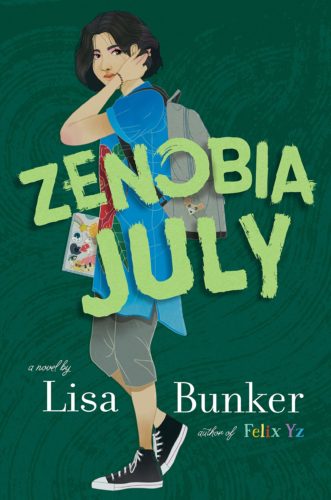
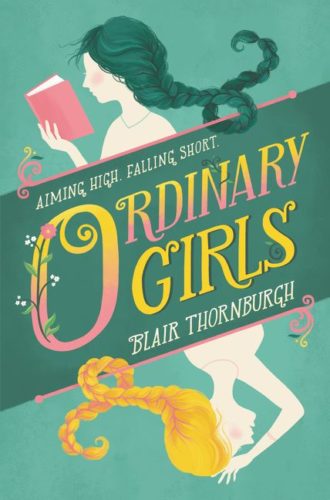
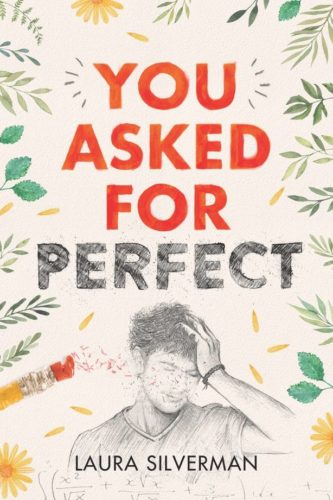
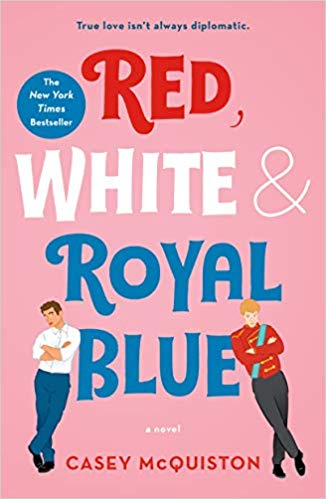
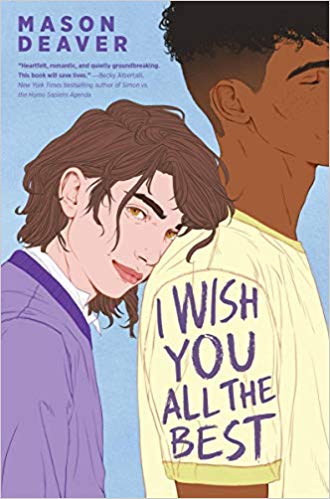
We were featured on 6 ABC’s Action News!
Check it out here:
https://6abc.com/society/bookstore-in-center-city-offers-refuge-for-the-lgbtq-community/5370218/
A book review is a tricky beast.
It’s easy to love or hate a book. It’s harder to try to put those feelings into words (as opposed to wild gesticulation), and harder still to talk about a book in a way that anticipates how it might make others feel.
I’m putting all of this up front because I want to come clean and say that I fell in l-o-v-e with Laura Dean Keeps Breaking Up With Me.
I fell in love hard. I don’t remember the last time a graphic novel swept me up so quickly and completely. In its opening pages we see Freddy and her friends getting ready for an ‘80s-themed dance at their high school, laughing at appropriated nostalgia as entertainment in a nod to the story’s theme of adult-ish relationships enacted by a bunch of kids who don’t really understand those, either. As the dialogue shifted around our heroine and the art echoed her isolation in painful anticipation for someone — a very particular someone — to arrive, Laura Dean Keeps Breaking Up With Me had my heart in its metaphorical hands. I got it bad, folks.
I loved wry, shy, self-involved Freddy, who glumly admits her freedom to be publicly humiliated by her same-sex paramour and have it treated as just the usual teenage angst is, technically, “progress.” I loved Doodle, Freddy’s best friend who compares Freddy’s troubles to DnD campaigns and drags her to a tarot reader to find solutions. I loved Buddy and Eric, the couple in Freddy’s friend group that Freddy claims are the only people she knows “who act like they’re really in love,” but who clearly have their own problems.
I loved, especially, the artistic rendering of the world they live in, and how they move through it. Rosemary Valero-O’Connell’s art (the story is by Mariko Tamaki, also the writer for the award-winning graphic novels Skim and This One Summer) is a revelation, using only white, variations of gray, and pops of muted pink to capture an almost touchable sense of depth and texture. The composition of each page is thoughtful and evocative — how certain moments are framed, what elements the art focuses on, tell just as much of a story as the words on that page. Sometimes, when a graphic novel is created by both a writer and an artist, there can be the sense of those two elements coming together as separate entities. But the overall impression of Laura Dean Keeps Breaking Up With Me is as organic as the Berkeley vegetation that curls into the background, as inevitable as Freddy’s heartbreak.
That brings me to the only element I didn’t get to fall in love with: Laura Dean.
I wanted to, very much. Not that I wanted the book to excuse her horrible treatment of Freddy, or put a patch on the sheer awfulness of their situation. But since the book uses the medium of their relationship to tell the story, I did want to better understand how she could be someone Freddy fell for. We’re clear on the basic attraction: Laura Dean’s androgynous good looks, her swagger, her popularity. It’s a lot more murky what keeps drawing Freddy back, humiliation after humiliation, insult to all her friends upon injury to her own heart. Sex appeal is one thing, but without insight into how the two of them work beyond the drama, Freddy’s adherence to the pattern comes off as downright masochistic.
It’s not just Laura Dean who feels a bit opaque — there’s a lot going on with Freddy’s friends, and we don’t get to see as much as that as I would have liked, either. I think it’s fair to say that ties in with the book’s themes, as part of Freddy’s growth in understanding how infatuation narrows your world, while real love should open it up. Laura Dean Keeps Breaking Up With Me wants you to know that love is different for everyone, which means our connections to the people (or books?) that we love are as individual, as unique, as the people themselves.
Which might mean you can’t trust a word of this review. This book is clearly an experience in of itself, with an emotional alchemy that gave me pure gold. I can’t predict the results for anyone else, but I can wholeheartedly recommend taking a chance on something — a pretty face in the crowd, a gorgeous book on a shelf — that could turn out absolutely fantastic.
Review by Katharine, a volunteer at Philly AIDS Thrift @ Giovanni’s Room.
In many creative industries there’s a concept known as the elevator pitch: pretend you’re in an elevator with a captive audience only until the doors open, so sell your project in two sentences or less. I can just imagine the elevator pitch for Starworld: “An updated take on 1994’s Heavenly Creatures — only no psychedelic claymation or murder, and directed by the Gen Z equivalent of John Hughes.”
In a high school possibly near you, the nerdy and awkward Sam crushes on the popular and seemingly perfect Zoe from afar. A random contrivance allows them to exchange phone numbers, and a friendship slowly begins to blossom as they text to create a shared fantasy world of dragons, starships, and epic quests — a world where the very real troubles of their lives seem bearable.
I realize some book lovers despair over how the YA market has exploded in the past decade or so, wondering why there’s so much attention given to the love triangles and tribulations of kids who don’t even qualify for a driver’s license. I’m not one of those readers, and I have the books by Lloyd Alexander, Laurie Anderson, and Margaret Mahy to back that up. Young adult books can be more than the formula. YA narratives can be subtle!
Starworld isn’t, though. Dueling first-person POV chapters outline the main character’s personalities and primary concerns in quick paragraphs, with a tendency to tell us how they feel or act without letting the reader observe for themselves. Sam and Zoe also have an entire television season’s worth of Very Special Episodes between them: dying parents, parents with mental illness, emotional abuse, adoption anxiety, abandonment anxiety, disability… And this is all before Sam, who is gay, realizes she’s falling ever-deeper in love with Zoe — who is very, very straight.
I wasn’t kidding with the John Hughes comparison — it’s a classic setup, although with a more realistic execution. (Think the original ending of Pretty in Pink, where Andie goes back into prom with Duckie instead of Blane.) Nostalgic teen comedies are almost an American pastime at this point, but don’t current teenagers deserve more media that speaks directly to their experiences? And if we’re being totally honest, Hughes’ movies can have issues in retrospect: Bender pawing at Claire beneath the table, the visual jokes with disabled students… Long Duk Dong.
Unfortunately, Starworld has its own issues.
Not the same issues — we’ve come that far, at least. And from the authors’ afterword and list of official resources, it’s clear the intention was to elevate the general discussion.
I find I can’t give them a complete pass, despite that. While more disabled characters and more characters with mental illnesses in fiction is an admirable goal, it doesn’t do much for the conversation when those characters are little more than the walking embodiment of each concept. Sam’s neglect at the hands of her mother is never addressed as abuse separate from the fact of her mother’s mental illness, ignoring how many people manage to be good parents despite tricky brain chemistry. Likewise, Zoe’s brother on the nonverbal end of the autism spectrum mainly functions as a potential menace, with Zoe constantly reminding us of the times he physically harmed or otherwise devastated her parents.
While negative emotions involving difficult family dynamics are normal, and nothing to be ashamed of, Sam’s mom and Zoe’s brother don’t get to be anything but difficulties. The mom’s mental illness is there to provide Sam a story of personal liberation, and the brother’s disability only serves to underscore Zoe’s anxiety about her place in her adopted family. Put plainly: they’re not well-developed characters, they’re obstacles; the dragons that must be slain to reach the princess(es) in the castle.
One of the reasons Hughes’ films endure, despite their problems, is their honesty. A lot of popular teen media transports its characters into fantastical contexts, like magical boarding school or a technology-enhanced gladiator’s arena. Or, if the context is mundane, then the characters themselves become fantastical: they ooze adult confidence and glamour, navigating lives of sleuthing, seduction, and even murder. It’s hard to make realistic teenagers in a realistic setting entertaining, because… well, we’ve all been there, and it’s hard to package our own experiences as escapism. But Hughes did it.
To its credit, so does Starworld. The drama gets dialed up as far as it’ll go, but the kids involved are still very much kids. There’s a frankness about sex, swearing, and even some casual alcohol use, but everyone is a little awkward and believably rough around the edges. The POVs for each character can be intense — Zoe can’t go ten minutes without falling into despair, while Sam piles on the pop culture references to the breaking point — but so is high school. No one gets through without running the gamut of humiliations and high emotion.
Admittedly the book loses a lot of its surety when it tries to tackle much more serious and specific issues which are less universal than the struggle of adolescence. I’m not sure what it has to offer to a reader who is already at the point of “these things happen, it can be a part of someone’s everyday life,” but it could be the perfect jumping-off point to start a conversation, especially with younger readers who crave a relatable context for what might be intimidating issues. Starworld only lays the groundwork for these discussions, and it perhaps introduces a few too many elements that deserve a deeper investigation than they’re given. There’s still an irrepressible charm in the voices of its teenage characters and the sweetness of its premise. Maybe Starworld is not the problem-free John Hughes-esque lesbian high school romance we all deserve (deserve, dammit!), but it’s still fun.
Review by Katharine, a volunteer at Philly AIDS Thrift @ Giovanni’s Room.
Did you miss Sophie Lewis reading from her latest book Full Surrogacy Now: Feminism Against Family last Friday? Never fear, because we got your back! We have the exclusive audio from the event. You can check out the link below and hear Sophie read from her provocative new book.
And remember to order your copy of Full Surrogacy Now: Feminism Against Family from QueerBooks.com for just $26.95 + tax!
Hey there, folks. My name is Katharine, and I am still kind of shy about putting my face up on the internet; my Instagram is empty, and I don’t even do Twitter. I’m definitely not the type to chronicle my first sexual experience in hiring an escort and put it online for the world to see.
That also means I’m not the award-winning author of international sensation My Lesbian Experience With Loneliness, so, you know. Joke’s on me.
In 2015 Kabi Nagata was twenty-eight years old, chronically depressed, and sexually unexpressed. Feeling stunted in almost all areas of life, but most essentially in her connections with other people, she decided to work toward the concrete goal of having sex with another woman for the first time. This, she rather desperately hoped, would give her an entrée into real adulthood, or at least a better understanding of herself.
It… didn’t quite work out as planned. But it did launch a manga series.
If you’re unfamiliar with manga, or Japanese graphic novels and comics, My Lesbian Experience With Loneliness might be, well, an experience. It’s in the same autobiographical vein of Marjane Satrapi’s Persepolis or Alison Bechdel’s Fun Home, but the art is a more impressionistic than realistic. The simpler character designs allow for a focus on details, like the protagonist’s permanently astray hairs, to inform you of their emotionality. Reality can be drawn with a sense of fluidly for the same effect: a pretty girl’s smile lights the air around her with sparkles, a character’s skin can almost melt with mortification. Even nakedness is drawn more evocatively than explicitly.
Nagata first posted her story for free, online, and it was only after it became a success and a sensation that it was published through more traditional means. This trajectory makes a lot more sense in the context of the story — because sharing her experiences and the reactions she received are a big part of that story — when you see how Nagata uses Twitter and other platforms to navigate a social sphere she otherwise feels hopelessly unequipped to enter. Still, with no lack of hot-take think pieces on how our Facebook feeds are basically fool’s gold, it’s arguable that a certain kind of social media prioritizes the audience — its purpose is to inspire or entertain, not document an authentic experience.
My Lesbian Experience With Loneliness was written with the exact opposite impulse. In fact, Nagata describes how she first decided to write down her story in the first place because she found herself glamorizing her own memories of hiring an escort in retrospect — making it sexier, cooler, more fun, less awkward and aimless. I personally spend way too much time on social media to undermine its value as entertainment. But if you’re one of the growing number of people who have started to feel the disconnect between how life is lived and how life can be edited, polished, and posted for public consumption, Nagata’s series is a perspective-shifting antidote.
After the success of the MLEWL, Nagata decided to continue for as long as possible in this vein of honesty and sharing, and the follow-up was My Solo Exchange Diary. The title is a reference to a Japanese trend among schoolgirls, especially popular in the ‘90s, of a notebook passed back and forth between two friends as they share their daily experiences and thoughts. In her isolation and after her previous experiences, Nagata knows the person she most wants to develop her relationship with is herself: “Dear Nagata Kabi,” she begins each chapter of the Exchange Diary books. “How are you? This is Nagata Kabi.”
So, how’s a deep introspection of everyday life and a recreation of mundane details read? Surprisingly affecting, or at least I found it so. Nagata’s visual representation of her metaphorical and emotional struggles can make even her darkest agonies relatable, even wryly funny. When paired with her thoughtful insights, it creates an unexpectedly gripping narrative out of real-life victories like moving into one’s own place or going on a first date.
And if this were a fictional story, that’s probably where it would end. Instead, Nagata continues — and then concludes — her series with My Solo Exchange Diary, volume two, the English translation being published just last month. (With plenty of brand-new copies now available at Giovanni’s Room!) Although darker elements have always played a part in the series — issues of self-harm, suicidal thoughts, emotional abuse — this is the volume where they really take center stage. Nagata takes a hit from the double isolation of both living on her own and working a very solitary job, even if it is her dream job. She ends up staying in-hospital for a while… and then…
I don’t want to give away too much. The series’ strength lies not in what happens but how it happens, and why, and Nagata’s story in particular is one that begs to be experienced instead of explained. This doesn’t always make for a pleasant read, especially with the potential for culture shock in an American reader when encountering Japan’s approach to mental health. (Gentle scolding: apparently a much more palatable approach than say, medication.) But we’re back to the issue of honesty again. You can level a lot of criticisms at the series: that it’s dark, maybe even dull in spots, or even that such an exhausting documentation of detail doesn’t always amount to an actual story. (I wouldn’t say any of that, for the record, but tastes differ.) However, anyone who’s been through the “two steps forward, one step back” wringer of recovery can’t deny: this is exactly what that looks like.
Say or think what you will about this age of living our lives either surrounded by or participating in the performance of social media — there are plenty of places you can find success stories, or polished images meant to inspire by their glossy perfection. Maybe there’s also room for something a lot messier, and a lot more personal, in order to encourage as much as inspire. Maybe it’s just as important to remember: struggle might not feel like success, but it’s definitely not failure.
Review by Katharine, a volunteer at Philly AIDS Thrift @ Giovanni’s Room.
Author and Artist Jim Smith visited Philly AIDS Thrift @ Giovanni’s Room to tell us about his favorite queer book, Friends of Dorothy: Why Gay Boys and Gay Men Love the Wizard of Oz
Also, don’t forget to check out Jim Smith’s new book And The Winner Is…
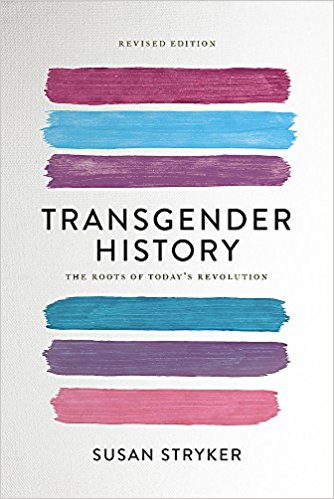
Susan Stryker is my hero. She’s given us an extremely well written and researched history of transgender people in the United States. Stryker offers concise and accessible coverage of trans people in society from the 1850s on to modern day. History is needed for trans liberation to occur!
$17.99
Casey Plett rocks and is an amazing novelist. She won a Lamba Literary Award for her first work of short stories [A Safe Girl to Love] and here she gives us a whole novel! All I’ll say is: Complex trans women characters, identity and family issues, and trans futures.
$17.95
Another collection of trans/genderqueer speculative fiction stories!! I’m literally thrilled about this new book considering how much I enjoyed the first two! We got a whole anthology of non-cis experiences: “from an intergalactic art heist to the everyday life of a trans woman through the lens of horror movies; non-binary parenting in the far future, to a unique method of traveling back to the past.” Fun genre tropes including and/or subverted by transness? Yes please!
$18.00
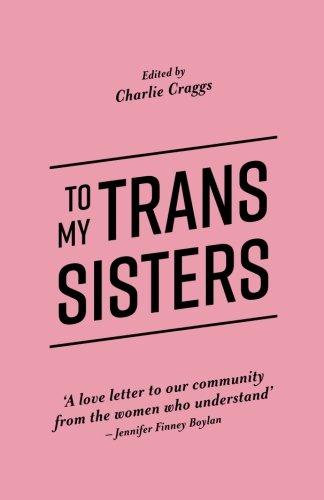
Here’s the most loving compilation of advice from dozens of angelic, thriving trans women, written for trans women! Laura Jane Grace, Isis King, Marci Bowers, Bionka Simone, and soo many others share their words and experiences in solidarity and hope. Jennifer Finney Boylan describes this book best: “A love letter to our community from the women who understand.”
$18.95

In this exciting new piece of trans media there are 30 stories that offer revolutionary erotic fantasies by trans people, about trans people, and for trans people at the crossroads of history, biology, anxiety, and love. This collection serves as a breath of fresh and necessary air, counteracting so much alienation through healing and hot stories.
$25.00
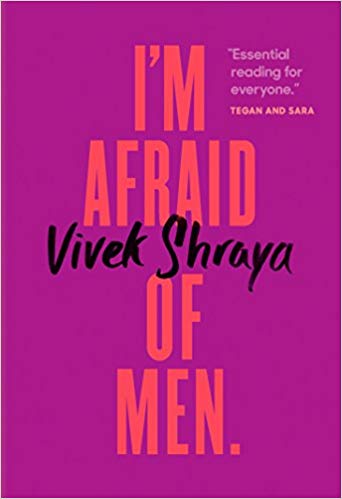
The beautiful Shraya, a trans artist, explores how masculinity was imposed on her as a child and illustrates the trauma caused by a life oppressed by misogyny, homophobia, and transphobia. Through her perspective Shraya gives a beautiful re-imagining of gender for the twenty-first century.
$16.00
I’ve found this book to be a great way to explore, learn, and support myself through the tough and vulnerable process of digging into my gender identity. It’s full of resources, easy explanations of terminology, reflecting points, and just comprehensive information! I fully recommend it to get the language and understanding to express your gender identity.
$19.95
Who doesn’t want and need positive encouragement? I love it. In the words of Sara Quin, “I take strength from this confident, honest book and from Kate’s success as a compassionate human being who has courageously spoken out for all of us living outside of the box. We are being offered alternatives and insight from an ally who has been there and survived.” My hot take: Kate Bornstein is an amazing trans elder and this book is fun and empowering.
$16.95
Support trans people by informing yourself on how to create an inclusive work environment! It’s based on new research on non-binary inclusion within businesses so it gives new info and a business case for inclusion. So… slip it under the door of your boss! Really though – if you have any say in employing others, you need this book!
$24.95
A wonderful and straightforward dispelling of harmful myths! This book offers you a chance at a greater understanding of the trans experience in accessible language and easy format. Through this read, you’ll push back against the ill-informed prejudice society has taught you!
$16.00
For you or anyone you know who may be struggling to get a grasp on this concept! Through a disarming comic-book style, get a grasp on they/them pronouns and find alternatives to gendered language. It’s a guide in the format of a dialogue between best friends and it’s honestly so cute, fun, and easy!
$7.99
We were lucky enough to have Sarah Mirk stop by to talk about her new book Open Earth, as well as recommend two other books she’s really digging right now!
Order Sarah’s book now:
Pick up her recommendations too!
October is quickly approaching, and so we decided to put together a list of books everyone should read for LGBT History month. Do you have these titles on your bookshelf?
How to Survive a Plague: The Story of How Activists and Scientists Tamed AIDS
How to Survive a Plague by David France provides a detailed account of the activists fighting to stop the AIDS epidemic. Thoroughly researched and expansive, France gives insider insight into the harrowing fight for the rights and lives of people with a positive diagnosis.
In Cleve Jones’ memoir, When We Rise, he recounts his dive into politics in San Francisco, as well as his first-hand account of the AIDS epidemic and his efforts to raise awareness through The AIDS Memorial Quilt and The AIDS Foundation. This moving book tells the intimate story of a prolific figure in the LGBT movement.
Meg-John Barker and Julia Scheele’s Queer: A Graphic History provides an overview of the LGBTQ movement in graphic novel form. This incredibly accessible book that is both an informative and entertaining way to learn about landmark moments and theories in queer history.